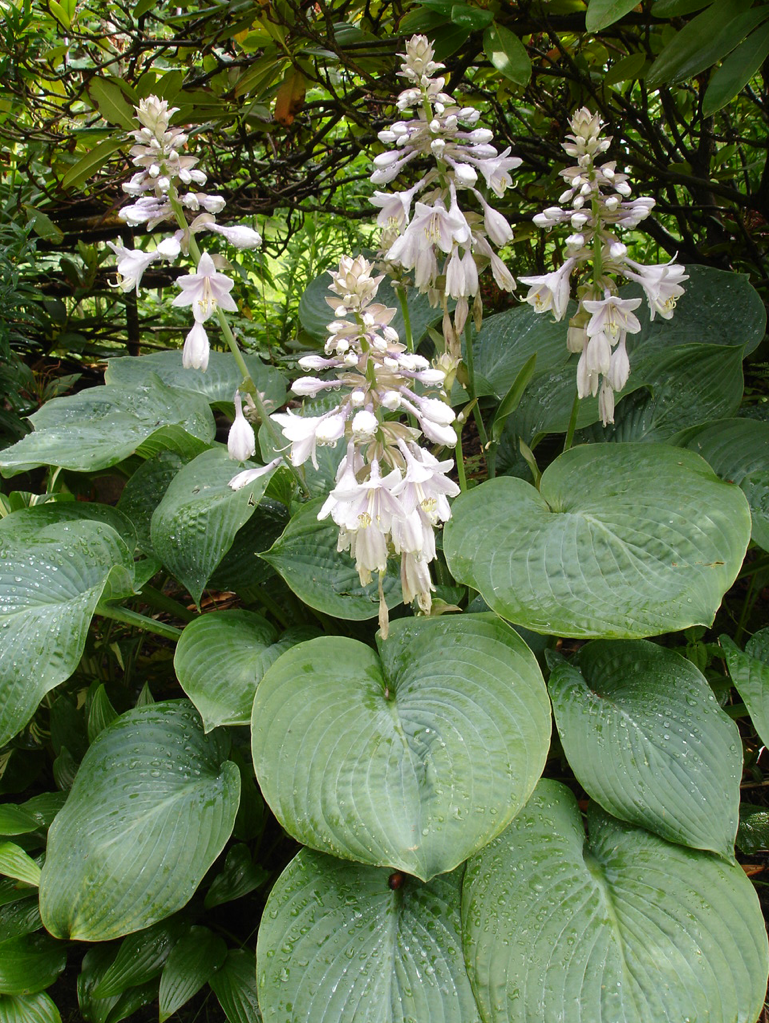Yesterday I had the pleasure of attending a program given by one of our sister clubs in the Central Atlantic Region, Gettysburg Garden Club. The speaker was Donna Seitz of Hosta Hideaway in York Springs who grows over 450 types of hosta at her nursery along with other shade loving plants. She had brought along a number of interesting hosta cultivars that attendees passed along to look at closely and interjected her talk with pointers on hosta care.
Broadly and colloquially speaking, hostas are called “Plantain Lilies” or “August Lilies” which are grown as shade tolerant foliage plants, often (not always) with fragrant flowers. They are named after an Austrian botanist, Nicholas Thomas Host. That plant our grandmother’s grew was possibly the basic “Plantaginea”, originating in China, Japan and Korea, then introduced to the United States in the mid-1800’s. The number of cultivars has increased exponentially.
The “Hosta of the Year”, a designation given by the American Hosta Growers is “Stained Glass”: golden with a green margin and fragrant lavender flowers. She also showed us the first hosta to win that title in 1996, a very small type with which you may be familiar: “So Sweet”, with lance shaped mid-green leaves with white margins. Next year’s winner-to-be is very unusual: Abiqua Drinking Gourd hosta, whose leaves are a blue shade and curiously cupped and gathered such that they really do hold water. Donna said that butterflies (and hummers?!) can be seen drinking from the leaves.
Other well known hostas are giants: golden leaved “Sum and Substance” which can become an immense 2 1/2 feet all and 5 feet across and blue-green “Blue Angel”, possibly 3 feet by 4 feet. One of the largest is “Empress Wu” that can achieve a height of 4 feet tall. The leaves can be 18 inches wide, with the plant taking up 6 feet of space! These are compared with diminutive Blue Mouse Ears with greyish-blue to blue-green foliage that only reaches about 8 inches tall by a foot around and “Lemon Zest”, a bright yellow only 5 inches tall by 1 foot circumference. Others shown or mentioned were “Frances Williams” which has rounded blue-green leaves with a golden variegation around the edges, “Marilyn Monroe” with wavy edged grey-green leaves with a white back and red petioles and “Corkscrew” with narrow green leaves that are twisted and fused and “albo marginata” having a deep green leaf centers with brushed white margins.
Hostas can be grown from seed which leads to hybridizing varieties and especially tissue culture. The plants often “sport”–a spontaneous mutation which can actually be removed from the plant and grown on separately. This is a five year process where it is tested for reversion back to the normal plant or if it will remain a stable mutation that can be named.
As for care, Donna said that hostas can be very forgiving about soil, but it is best to prepare it well with additions of dried horse manure and all sorts of composted material and like average moisture. It is best to site them where they are in shade during the “sun tanning hours” between 11-2 pm. Deer and rodents enjoy munching on hostas as do slugs, which prefer the thinner leaved varieties. She suggested the “wood laid on the ground slug trap”.
Containerized hosta can be overwintered. In fall after the leaves died back, she suggests removing the debris and making sure all moisture in the pot has evaporated out. Make sure the drainage holes are clear. Then, take a plastic sheet and cover the top of the pot, using a bungee cord to secure it. In the spring, once the weather breaks, remove the plastic sheet. You can also overwinter hostas in a cold frame. As for hostas in the ground, let them die back. If they are in soil that drains well over the winter, they should be fine.



